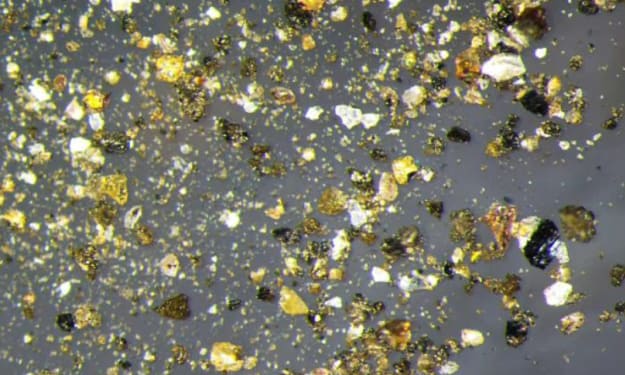Why do organisms generally become larger in oxygen-rich environments?
Organisms become larger in an oxygen-rich environment

The day before yesterday Hays Wolf Mountain (Wolf Mountain, Hun) had mentioned that the current atmospheric oxygen content of the Earth is only 21%, but this is not the era of the highest atmospheric oxygen content in the geological history of the Earth. The era with the highest oxygen content in the Earth's geological history is thought to have occupied 27% to 28% of the atmospheric content of oxygen, which is more than 30% of the oxygen content above today's sea level. There are thought to have been two possible peaks of this oxygen enrichment. One occurred in the Carboniferous period between 360 million and 300 million years ago. Plants at this time grew particularly large because of the oxygen enrichment. Ferns were often tens to hundreds of meters tall. The death of these giant plants produced a huge accumulation, which is the largest source of today's coal strata, hence the name of this era, the Carboniferous. Another peak of oxygen enrichment may have occurred 200 to 140 million years ago in the Jurassic period, when the world was covered with giant reptiles, becoming the most prosperous era of dinosaurs. Therefore, once the Earth was enriched with oxygen, both plants and animals would increase in size massively in parallel. This has been the basic consensus. But the problem is that
Once enriched with oxygen, why will organisms generally become larger? This may be the result of natural selection. The first thing to understand is the premise that whether it is a plant or an animal, growing more massive, the benefits to itself and its population; certainly outweigh the disadvantages. Whether it is an animal or a plant, once it becomes relatively huge, the first benefit is to become more long-lived. For example, huge trees, their life years are often hundreds or even thousands of years of immortality. And small plants are generally a year and a lifetime. The same goes for animals, huge elephants and blue whales start at 80 years old, and many can live up to 120 years. And most mice can only have a life span of five or six years. Humans, in proportion to their size, have a normal lifespan of about 45 years. And the average life expectancy of ancient people also happens to be 45 to 50 years. Modern man generally to the life expectancy of elephants is the result of technological progress and the absolute dominance of humans on the planet. And the species is larger in size and weight, there are fewer natural enemies. It can also heal itself better when it encounters general injuries. Therefore organisms have a natural requirement to pursue greater size and weight.
Earth organisms have a natural need to make themselves bigger, so if they have the conditions to get bigger, they have to get as big as possible. Except for some bacteria, animals and plants need respiration to function as a cycle of matter and energy in their bodies. And breathing itself is very energy-intensive. For example, when a person is sleeping, the largest part of the body's energy consumption is the respiratory muscle. Plants also need high energy consumption to breathe. Therefore, whether it is an animal or a plant, in the case of constant oxygen content, the greater the volume and weight of itself, the tmore he respiratory system must be synchronized to increase. And the respiratory system is difficult to quickly enlarge, which is also because animals and plants can not suddenly become larger one of the most dragging factors. In an oxygen-rich environment, the respiratory system does not require much energy to meet the oxygen needs of the organism, which is most directly reflected in insects. Insects are special in that in addition to breathing through their respiratory organs, the primitive lungs, they can also breathe directly through the stomata on their bodies. Plants also have stomata. Of course, humans have evolved to have only nostrils and no stomata. In the case of high atmospheric oxygen enrichment, insects and most plants, only need oxygen body surface natural penetration can meet most of the respiratory requirements.
Instead of using the respiratory organs that need to consume a lot of energy. Therefore, plants and insects in the Peat Period were frighteningly huge. In turn, the general enlargement of plants led to greater photosynthesis and more oxygen release. As plants and insects got bigger, more animals on the food chain, which also had more food than they could eat, naturally followed. At this time the Earth ushered in the most prosperous era of prehistory. And if the Earth's oxygen levels have been so high. Plants are growing overwhelmingly, there are giant pythons everywhere, and there is no room for human evolutionary development. It is also because the Earth was hit, the oxygen content dropped, and the dinosaurs either reunited or become small birds. Humans only have the premise of the development of evolution. So it looks like everything is arranged. It is just a matter of probability.
About the Creator
Carlo Phil
Science and art are two sides of a coin






Comments
There are no comments for this story
Be the first to respond and start the conversation.